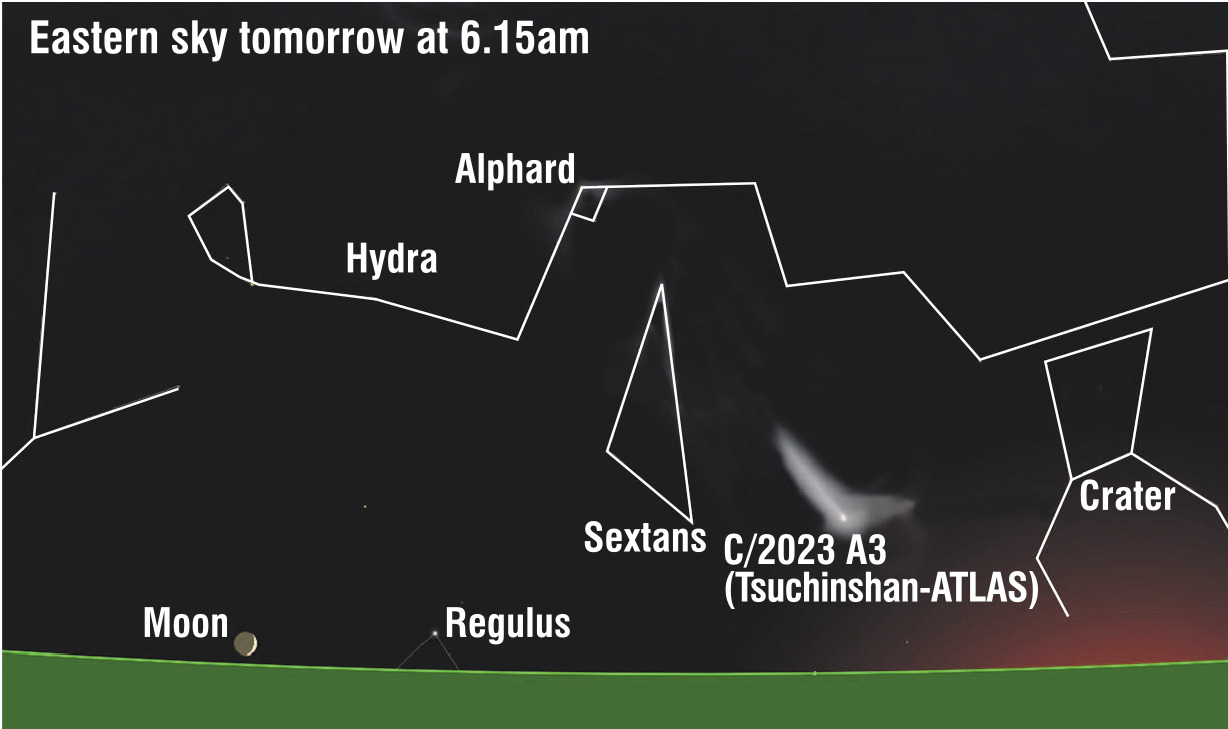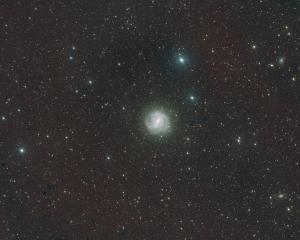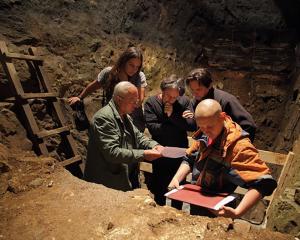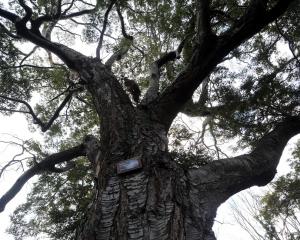
However, there’s a problem. The comet, making its first visit to the inner Solar System, will be dangerously close to the Sun in the sky when at its brightest, making it almost impossible to see. So, if you have a clear view of the eastern horizon and want to spot this once-in-a-lifetime comet, the next few mornings would be an excellent time to get up early. Here in Dunedin, anywhere on Otago Peninsula with an ocean view will be an excellent observing location (clouds permitting). While the comet is easily visible to the unaided eye, a pair of binoculars will enhance the view. Modern mobile phone cameras in "night" mode should be able to record decent images, especially if you mount them on a tripod.

C/2023 A3 rises about two hours before dawn; it is presently moving through the constellation Sextans. This week’s accompanying chart shows the view at 6.15 tomorrow morning (remember the clocks go forward tonight, so sunrise tomorrow is an hour later than today). At this time, the comet will be almost due east and just over seven degrees above the horizon. The waning crescent moon should also be visible, but it will be very low in the northeast.
The comet reaches its closest point to the sun on September 27, after which it begins its multimillion-year journey to the outer Solar System. The comet might be visible after sunset in October, but as I mentioned earlier, for southern hemisphere observers, this week maybe when we get our best views.












